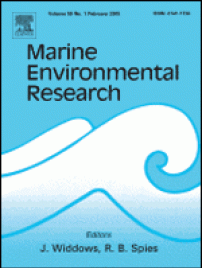Evaluating the potential of direct RNA nanopore sequencing: Metatranscriptomics highlights possible seasonal differences in a marine pelagic crustacean zooplankton community
 In this paper, we describe and evaluate the construction of a metatranscriptome dataset from a pelagic crustacean zooplankton community. We sampled zooplankton in one marine station, named LW02, in the North Sea, in both winter and summer, and generated transcripts using Oxford Nanopore Technology (ONT), a third-generation nanopore-based sequencing technology. ONT is, uniquely, capable of sequencing RNA directly, rather than depending on reverse transcription and PCR, and applicable to be used directly in the field. We found that metatranscriptomics is capable of species detection, including screening for the presence of endoparasites, hence competing with morphological identification. The most abundant mRNA transcripts with known function coded for essential metabolic processes. Although small in scale, our study provides the basis for future efforts to characterize the metatranscriptome of marine zooplankton communities and its application in biomonitoring programs.
In this paper, we describe and evaluate the construction of a metatranscriptome dataset from a pelagic crustacean zooplankton community. We sampled zooplankton in one marine station, named LW02, in the North Sea, in both winter and summer, and generated transcripts using Oxford Nanopore Technology (ONT), a third-generation nanopore-based sequencing technology. ONT is, uniquely, capable of sequencing RNA directly, rather than depending on reverse transcription and PCR, and applicable to be used directly in the field. We found that metatranscriptomics is capable of species detection, including screening for the presence of endoparasites, hence competing with morphological identification. The most abundant mRNA transcripts with known function coded for essential metabolic processes. Although small in scale, our study provides the basis for future efforts to characterize the metatranscriptome of marine zooplankton communities and its application in biomonitoring programs.
Scientific abstract:
The implementation of cost-effective monitoring programs for zooplankton remains challenging due to the requirements of taxonomical expertise and the high costs of sampling and species identification. To reduce costs, molecular methods have been proposed as alternatives to morphology-based monitoring. Metatranscriptomics can contribute to promote both cost-effectiveness and accuracy of biological assessments of aquatic ecosystems. Here, we describe and evaluate the construction of a metatranscriptome dataset from a pelagic crustacean zooplankton community. We sampled zooplankton in one marine station, named LW02, in the North Sea, in both winter and summer, and generated transcripts using Oxford Nanopore Technology (ONT), a third-generation nanopore-based sequencing technology. ONT is, uniquely, capable of sequencing RNA directly, rather than depending on reverse transcription and PCR, and applicable to be used directly in the field. We found that metatranscriptomics is capable of species detection, including screening for the presence of endoparasites, hence competing with morphological identification. Taxonomic analysis based on ribosomal 18S transcripts identified calanoid copepods, particularly Temora longicornis and Acartia clausi, as the most abundant community members. Moreover, up to 40.4% and 50.5% of all sequences could be assigned to predicted genes in the winter and summer sample, respectively. The most abundant mRNA transcripts with known function coded for essential metabolic processes. GO term annotation revealed that genes involved in glycolytic and translation-related processes were most expressed in the community. Although small in scale, our study provides the basis for future efforts to characterize the metatranscriptome of marine zooplankton communities and its application in biomonitoring programs.
Full reference (link):
Semmouri, I., De Schamphelaere, K., Mees, J., Janssen, C., & Asselman, J. (2020). Evaluating the potential of direct RNA nanopore sequencing: Metatranscriptomics highlights possible seasonal differences in a marine pelagic crustacean zooplankton community. Marine Environmental Research, 153, 104836. https://doi.org/10.1016/j.marenvres.2019.104836
